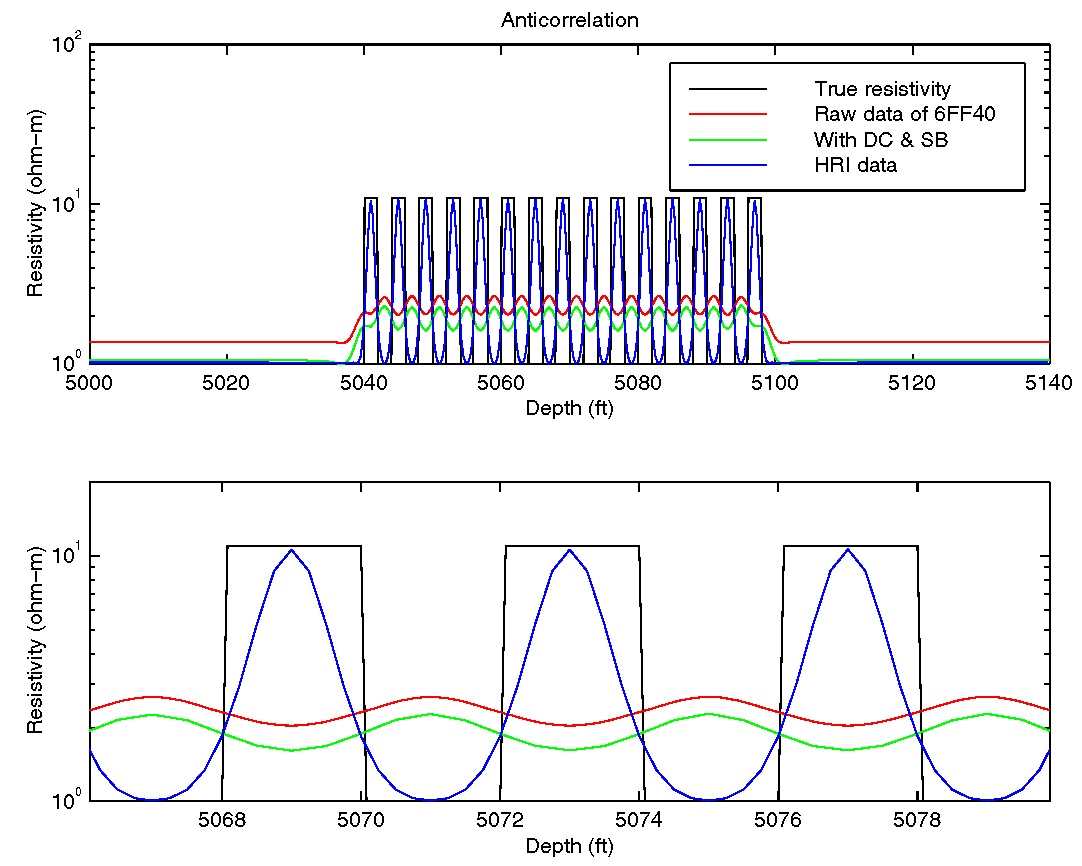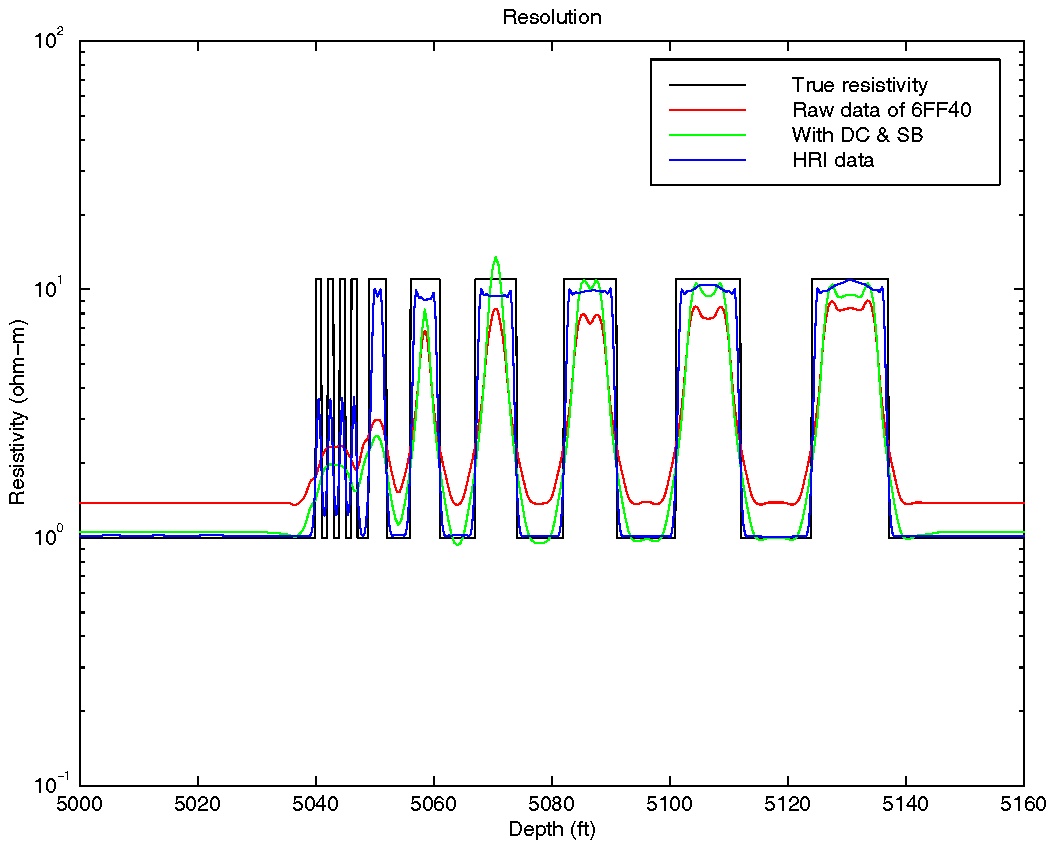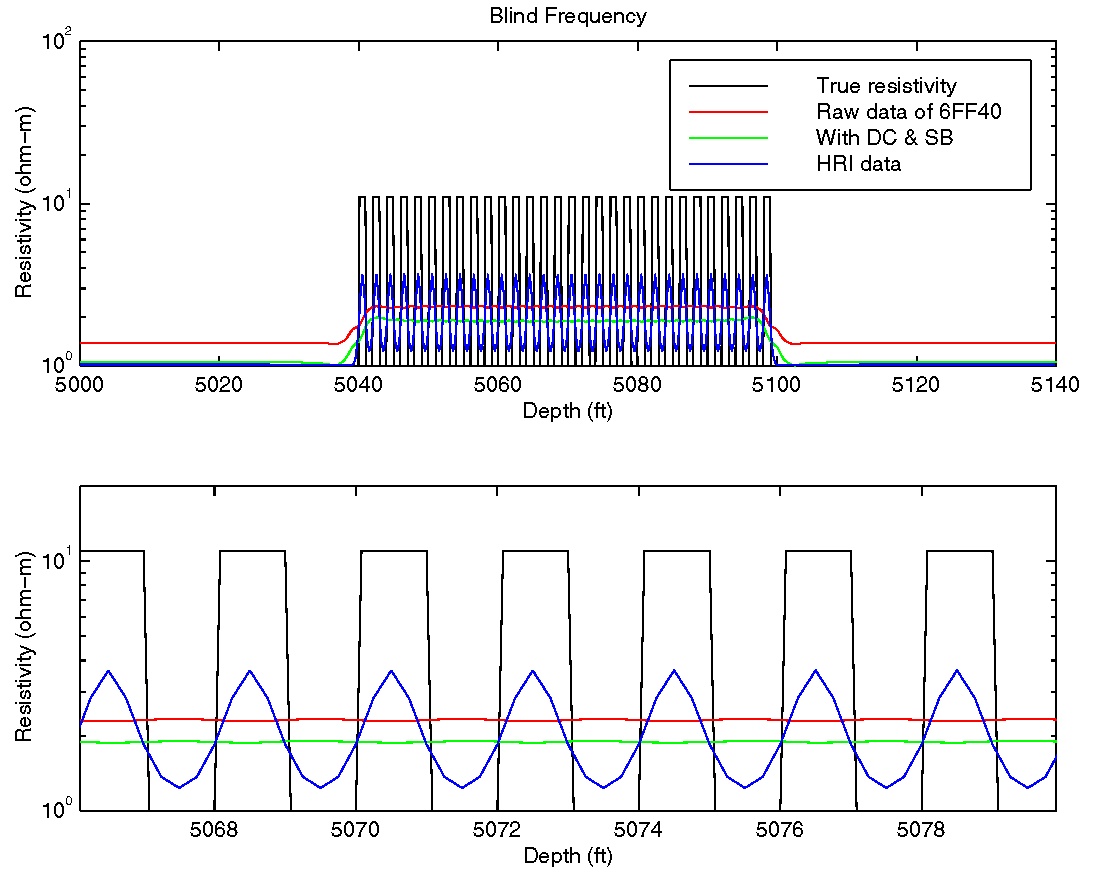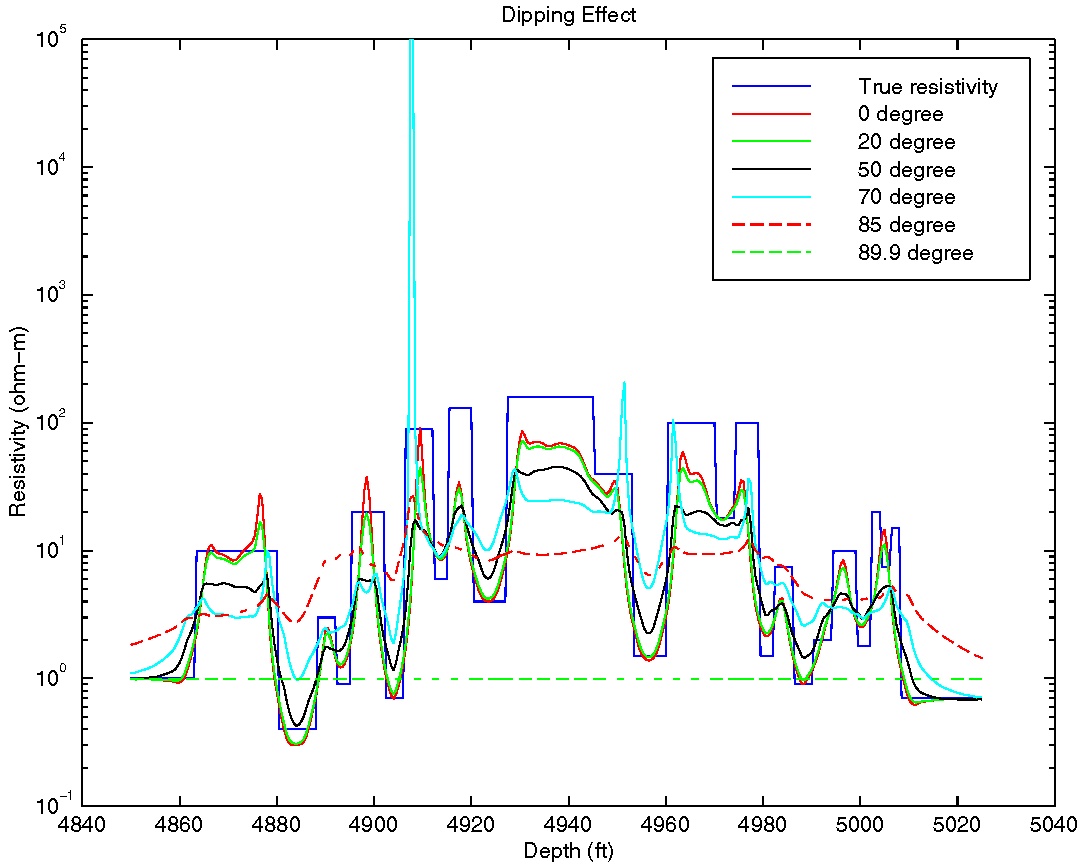
|
| |||

|
|||
|
Current distribution cAlculations Antenna design and simulations Current distributions on metallic plates Inverse scattering simulations Experimental inverse scattering Borehole measurements
|
Experimental Borehole MeasurementsThe following results show different aspects of the response of experimental logging tools used for petrol extraction. These tests are performed with a known underground profile of resistivity which is included in all the Figures. The two measurement tools used are Schlumberger's 6FF40 and Halliburton's HRI.
The following Figure shows so-called anticorrelation phenomenon. The changes
of the apparent conductivity (given by the tool as an output)
is anticorrelated with the true
conductivity. The reason is that the beds are so thin that their main
frequency components are located in the negative part of the transfer
function of the 6FF40 tool. By using the High Resolution
Induction tool (HRI), this phenomenon can be eliminated.
 Anticorrelation phenomenon
The next Figure shows the resolution capacity of both 6FF40 and HRI tools
using a "chirp" model for the underground profile of resistivity.
 Resolution
The following figure shows the "blind frequencies" of the 6FF40 tool.
The main frequency components are very close to the first zero of the 6FF40's
transfer function. Therefore, the 6FF40 cannot detect the
existence of these thin beds. By using the HRI tool, these beds can be
detected.
 Blind frequencies of the 6FF40 tool
The final Figure shows the 6FF40 response in the Oklahoma benchmark,
a famous an well-known underground profile.
The change of the apparent conductivity at different dipping angles
is caused by the "dipping effect".
 Dipping effect The above work is a collaboration between Siyuan Chen and Prof. Weng Cho Chew. Please send suggestions, comments, and inquiries to: siyuan@espark.ece.uiuc.edu.
|